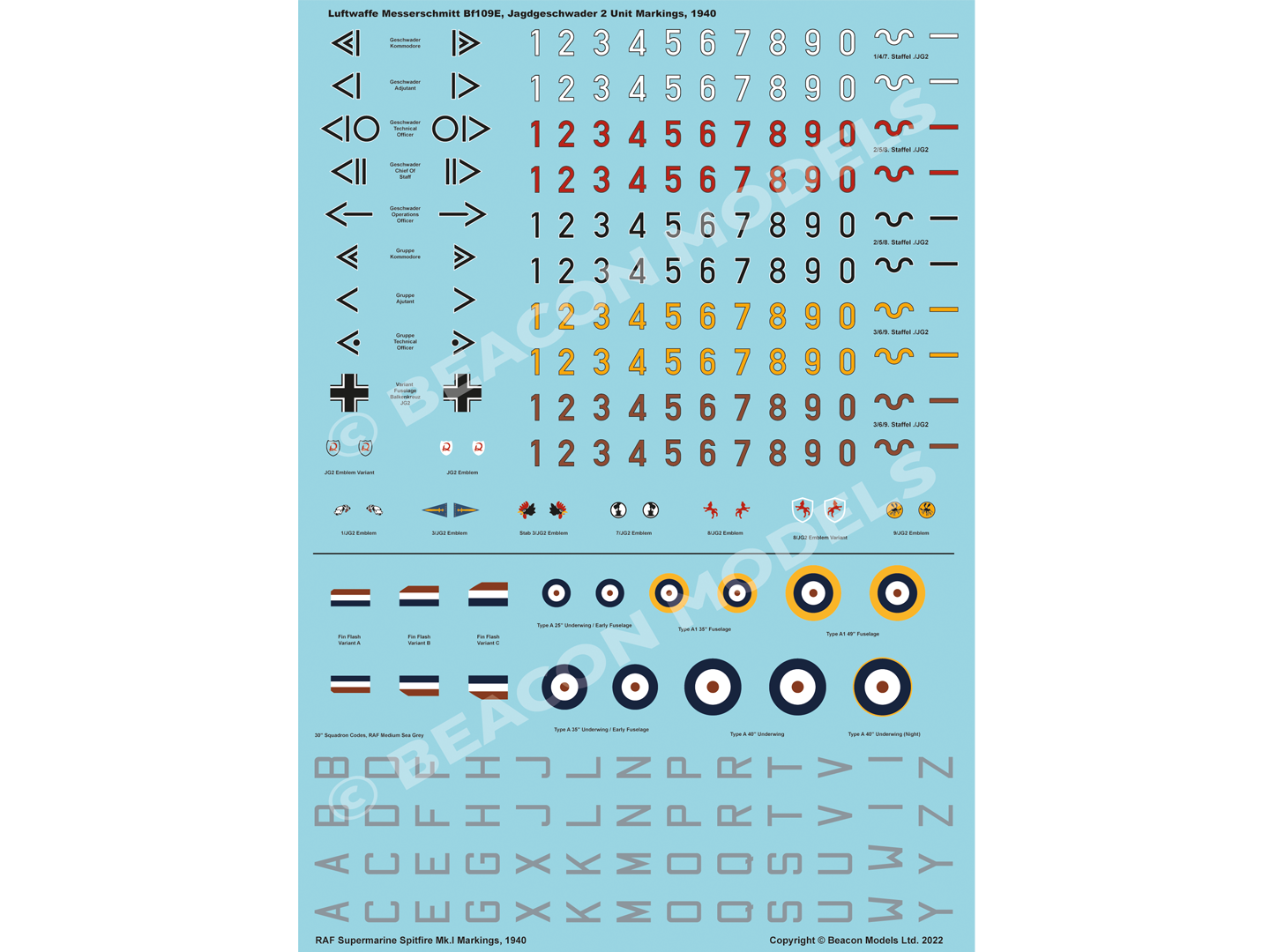Bf109E-1 Hangar Edition
Kit Features:
1x Messerschmitt Bf109E
Full colour instructions
Decals by Cartograf
2x Marking Schemes Included
The versatile and capable Bf 109 first flew in 1935 and was then improved over several variants up to the end of the Second World War. Well liked by pilots, it provided the mainstay of the Luftwaffe’s fighter aircraft squadrons throughout that time. The “Emil” first saw action with the Luftwaffe’s “Condor Legion” during the Spanish Civil War in 1938, where its effectiveness was proven. At the outbreak of the Second World War, the aircraft was deployed during the invasion of Poland in 1939, and some units were still flying the E-1 variant by the summer of 1940. However, armament and range were quickly identified as shortcomings. The E-1 was armed with four 7.92 mm machine guns, two in the wings and two on the nose. The improved E-3/E-4 cannon armed variants soon displaced most of the E-1s in service.
The landing gear can be modelled as lowered or retracted, as well as optional bladeless propeller spinners to represent the aircraft in flight.
This kit contains high quality waterslide decal markings made by Cartograf, for two aircraft:
Messerschmitt Bf 109E-1, 3.J/88, Spain, May 1938. Flown by Oberleutnant Hans Schmoller-Haldy
Messerschmitt Bf109E-1, 2.(J)/LG 2, Germany, August 1939
Kit Features:
1x Messerschmitt Bf109E
Full colour instructions
Decals by Cartograf
2x Marking Schemes Included
The versatile and capable Bf 109 first flew in 1935 and was then improved over several variants up to the end of the Second World War. Well liked by pilots, it provided the mainstay of the Luftwaffe’s fighter aircraft squadrons throughout that time. The “Emil” first saw action with the Luftwaffe’s “Condor Legion” during the Spanish Civil War in 1938, where its effectiveness was proven. At the outbreak of the Second World War, the aircraft was deployed during the invasion of Poland in 1939, and some units were still flying the E-1 variant by the summer of 1940. However, armament and range were quickly identified as shortcomings. The E-1 was armed with four 7.92 mm machine guns, two in the wings and two on the nose. The improved E-3/E-4 cannon armed variants soon displaced most of the E-1s in service.
The landing gear can be modelled as lowered or retracted, as well as optional bladeless propeller spinners to represent the aircraft in flight.
This kit contains high quality waterslide decal markings made by Cartograf, for two aircraft:
Messerschmitt Bf 109E-1, 3.J/88, Spain, May 1938. Flown by Oberleutnant Hans Schmoller-Haldy
Messerschmitt Bf109E-1, 2.(J)/LG 2, Germany, August 1939
Kit Features:
1x Messerschmitt Bf109E
Full colour instructions
Decals by Cartograf
2x Marking Schemes Included
The versatile and capable Bf 109 first flew in 1935 and was then improved over several variants up to the end of the Second World War. Well liked by pilots, it provided the mainstay of the Luftwaffe’s fighter aircraft squadrons throughout that time. The “Emil” first saw action with the Luftwaffe’s “Condor Legion” during the Spanish Civil War in 1938, where its effectiveness was proven. At the outbreak of the Second World War, the aircraft was deployed during the invasion of Poland in 1939, and some units were still flying the E-1 variant by the summer of 1940. However, armament and range were quickly identified as shortcomings. The E-1 was armed with four 7.92 mm machine guns, two in the wings and two on the nose. The improved E-3/E-4 cannon armed variants soon displaced most of the E-1s in service.
The landing gear can be modelled as lowered or retracted, as well as optional bladeless propeller spinners to represent the aircraft in flight.
This kit contains high quality waterslide decal markings made by Cartograf, for two aircraft:
Messerschmitt Bf 109E-1, 3.J/88, Spain, May 1938. Flown by Oberleutnant Hans Schmoller-Haldy
Messerschmitt Bf109E-1, 2.(J)/LG 2, Germany, August 1939












